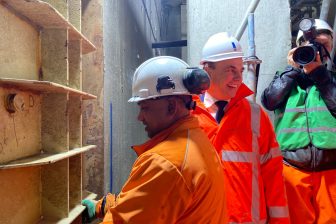ADB loan for Kyrgyz Republic Strategy 2007-2010
Kyrgyz Republic, Development Partners Cooperating to Ensure Sustainable Growth
MANILA, PHILIPPINES – The Kyrgyz Republic and several development partners, including the Asian Development Bank (ADB) have agreed on a Joint Country Support Strategy for 2007-2010 that will aim at a high and sustainable economic growth for the Central Asian nation amid challenges brought about by political instability and geographical barriers.
ADB has set aside between $117 million and $128 million for implementation of the four-year strategy. The ADB program within the joint strategic framework will focus on the country’s road network, agriculture and natural resources, and education including early childhood development. The strategy is premised on ensuring environmental sustainability, private sector development, and regional cooperation.
The Joint Country Support Strategy is a medium-term framework for managing cooperation between the government of the Kyrgyz Republic and development partners to achieve economic growth and poverty reduction goals. It seeks to align development partners’ support with the development strategies of the country.
The Kyrgyz Republic’s Joint Country Support Strategy was prepared by the ADB, Swiss Cooperation, United Kingdom’s Department for International Development, the United Nations Agencies, and the World Bank Group. It is closely aligned with the Country Development Strategy 2007-2010 approved in May 2007 by the Government of the Kyrgyz Republic, which focuses on economic development, governance and transparency in public administration, human development, and environmental sustainability.
In line with the Country Development Strategy of the Kyrgyz Republic, the development partners placed emphasis on labor productivity, competitiveness and improved governance to boost economic management through pro-poor growth, reduce corruption and enhance governance, promote human development through improved health and education services, and ensure environmental sustainability and natural resource management.
Sixteen years after breaking away from the Soviet system, the political environment in Kyrgyz Republic remains turbulent, marked by a revolution in March 2005 and subsequent disputes within and among the Government, Parliament, and civil society.
“Consolidating basic market reforms already carried out, together with dynamic regional growth would provide opportunities for accelerating growth,” said Lyaziza Sabyrova, senior country economist for ADB’s Kyrgyz Resident Mission. “Political stability will depend on making urgent and visible improvements in economic and social conditions, as well as clear results in attacking corruption, that meet the expectations of the population.”
The country is also saddled with geographical barriers since it is landlocked and mountainous, isolating it from international trade and transport. This situation is worsened by inadequate infrastructure and protectionist policies in neighboring countries.
About 43% of the population live below the poverty line while 11% live in extreme poverty. Nearly three quarters of the poor live in rural areas.
Agriculture, gold, and services have been the main drivers of economic growth in the Kyrgyz Republic over the past decade.
U las zojuist één van de gratis premium artikelen
Onbeperkt lezen? Profiteer nu van de introductieaanbieding voor € 10,- per maand.
Bent u al abonnee?



